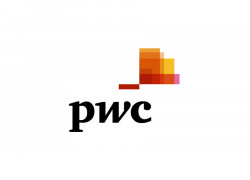PwC Luxembourg publishes latest report on banking trends and figures
“Banking in Luxembourg – Trends & Figures” is one of the two major banking publications that PwC has released over the last ten years. Our annual banking review takes an analytical view at this diversified banking landscape, aiming at identifying the major innovation trends within the Global and Luxembourg banking industry.
The current financial services environment is evolving rapidly, and global banking groups are taking a variety of approaches to transform and remain competitive. This year’s edition of the “Banking Trends & Figures Brochure” covers an in depth analysis of global banking innovations. We have considered innovations both on a geographical level and on a client type base, and in order to draw meaningful conclusions we have grouped the innovations into seven broad categories. Within these categories we then present the most important innovation trends globally and in Luxembourg.
Adapt or Die: What are the world’s top banking groups doing to stay ahead?
Worldwide banking groups are on a transformation journey, driven by new digital competition, the rise of sustainable finance, omnichannel client expectations and new technologies, banks face a crucial moment: adapt or die! Many banks have begun to adapt to the new ecosystem and deliver superior client experiences, but in order to go further, banks must bring constant innovation to the forefront.
Our in depth analysis brought up 274 innovations within 74 banking groups which have been mapped in seven innovation categories. “The client is king” - Customer experience is by far the leading category in terms of innovation, using the new technologies like artificial intelligence, data analytics and blockchain to increase customer satisfaction.
What can be learned from those banks that have successfully reached the top, and the innovations they are instituting in order to stay there? PwC sought to answer this question and has identified the following six key findings:
Innovation in Banking. Six Key Findings
- Attempt to develop the perfect mobile app: Mobile app development is the leading area of bank innovation. These applications assist customers in a wide range of areas, from budgeting to financial mentoring.
- Large-scale use of biometric data: Fingerprints, eye scans, facial recognition and finger vein scans have combined with high technology to offer verification at a level that banks had previously dreamed of.
- “Conversational Banking”: Using the latest artificial intelligence and data analytics, banks are able to connect more fluidly with clients through the use of virtual assistants, chatbots and machine learning algorithmus.
- Strategic Partnerships: Banks are realising that innovating in partnerships with tech companies and fintech boutiques allows quicker and more effective solutions.
- Sustainable finance: Policy makers have clearly announced the intention to make use of the capital markets to divert financial flows into the financing of sustainability and climate change related projects and banks are seen as at the forefront of this journey.
- SME solutions: Banks targeting the highly profitable SME segment and provide beside corporate financing a large number of innovative added value services to them.
Roxane Haas, Banking Industry Leader, PwC Luxembourg says, “For me, what stands out in this report is how important innovation is. If in 2019, the message was that banks must transform or die, now we see that many have begun to adapt to the new ecosystem and deliver superior client experiences although there is still a long way to go. In order to go further, banks must bring constant innovation to the forefront. With the speed at which the financial services environment is evolving, global and local banking groups are taking a variety of approaches to transform and remain competitive, a strategy that has been accelerated by Covid-19 and its impact.”
Björn Ebert, Banking Partner, PwC Luxembourg says, “High consumer satisfaction is the primary differentiator in the banking industry, with direct linkages to many crucial competitive advantages: higher recommendation rates, increased cross-selling possibilities, and a stronger brand. Banks need to decide what customer experience they would like to offer, whether they be mobile apps, increased internet based functions and offerings, or physical solutions. The old adage still exists in the new normal- the client is king.”
Communiqués liés
Emerging Trends in Real Estate®: Europe 2024
According to the latest Emerging Trends in Real Estate® Europe report from PwC ...
PwC Luxembourg: Best ESG (Environmental, Social and Governan...
The CFI.co judges have conferred on PwC Luxembourg the 2023 award for Best ESG (...
New Managing Partner and the Country Leadership Team for PwC...
It is with great pleasure that PwC Luxembourg announces that François Mousel as...
Use of Data Analytics and Artificial Intelligence in Luxembo...
PwC Luxembourg has just released the results of its survey: “Use of Data Analy...
Growing for the future: 18 New Partners and 5 Managing Direc...
With a record number of promotions, PwC Luxembourg is proud to announce the admi...
PwC Luxembourg publishes The SFDR Barometer for Management C...
PwC Luxembourg publishes The SFDR Barometer for Management Companies.
Il n'y a aucun résultat pour votre recherche







